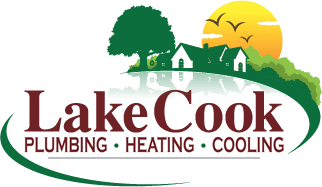5 Benefits of Water Jetting
- Plumbing

Maintaining your plumbing in Lake Zurich can be hard work, especially when it comes to stubborn clogs. While some clogs are an easy fix thanks to a plunger or drain cleaner, other clogs are hidden deep in your home’s plumbing or main sewer line. Unfortunately, not every clog can be fixed on your own. For the more intense clogs, you’ll need professional help. While a plumber may suggest a few different tricks, water jetting by Lake Cook is your best bet for a quick and painless solution to your drainage clog.
Why Water Jetting Benefits Your Plumbing
Clogs are a common plumbing problem and, if left untreated, they can cause severe damage to your system. Debris can still accumulate inside your pipes, no matter how well-maintained and accidents will happen from time to time. That’s why you want to use the best method when it comes to cleaning and clearing your drains and plumbing. While it may be tempting to use other methods such as a snake or drain cleaner, they’re not as safe or effective as water jetting. Clean plumbing that’s clear of clogs is a priority all homeowners should strive for. Here’s how water jetting can help:
- It’s effective at cleaning and clearing pipes. Water jetting uses a high-pressure hose to blast water through your plumbing lines. The combination of high-pressure and water makes for a very effective method at cleaning and clearing any obstructions inside your pipes without causing damages. While other methods such as snaking, may remove the obstruction, water jetting fully removes everything out of the line.
- It saves you money. While it may cost more money to water jet your plumbing versus other methods, it saves you costs further down the road. Clean and clear plumbing can help prevent other plumbing issues as well such as a cracked pipe or leak, which can be costly to repair.
- It’s a clean plumbing method. Your plumbing and sewer line are full of toxic contaminants and the more time your plumber spends on your plumbing, the more there’s a chance of coming into contact with them. Water jetting is fast and effective, which means less time the plumber has contact with the sewage inside your plumbing. Water jetting also spares you and your plumber the trouble of digging underground or cutting your walls to access your home’s plumbing.
- It’s good for the environment. Unlike chemical drain cleaners, which can be an easy fix but are very toxic, water jetting is just highly pressurized water. When using a water jet to remove any clogs, the only things that gets flushed down the pipes are water and whatever is clogging the pipe.
- It can prevent future problems. Since water jetting thoroughly cleans and clears your plumbing, it can prevent future clogs and other plumbing problems for a longer period of time than other methods. Since plumbers usually do a camera inspection before they water jet your plumbing, they can detect and treat other potential problems before they get worse.
Call Lake Cook Plumbing today & start learning more about your plumbing system!
Check out our stellar Google reviews!






